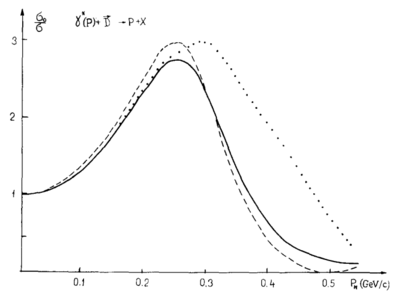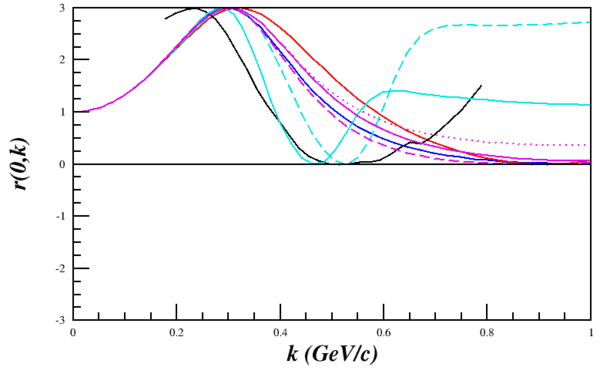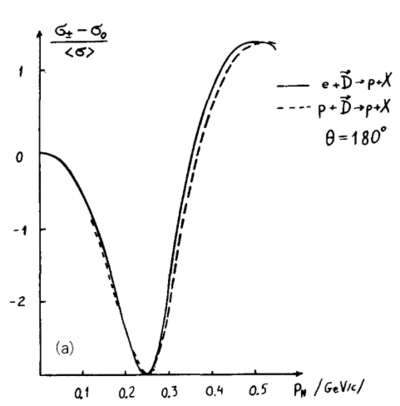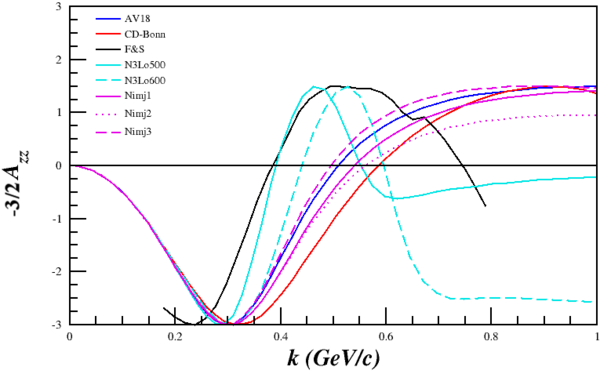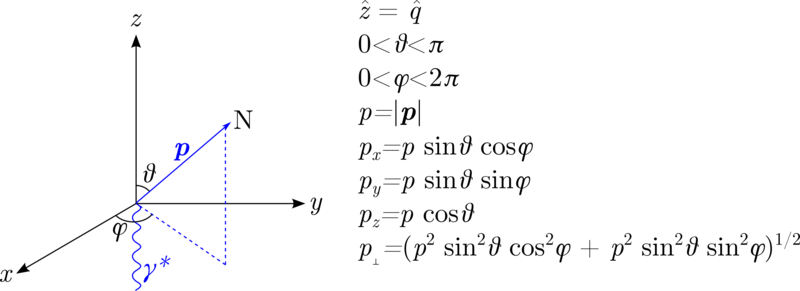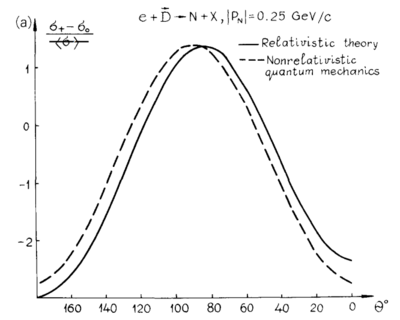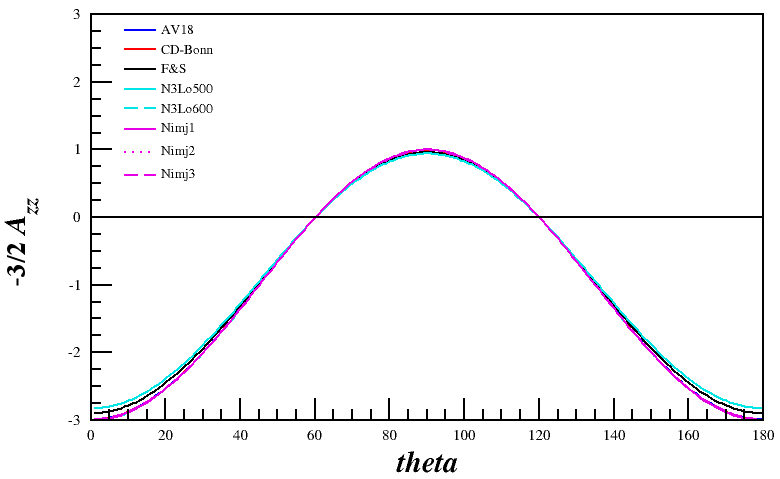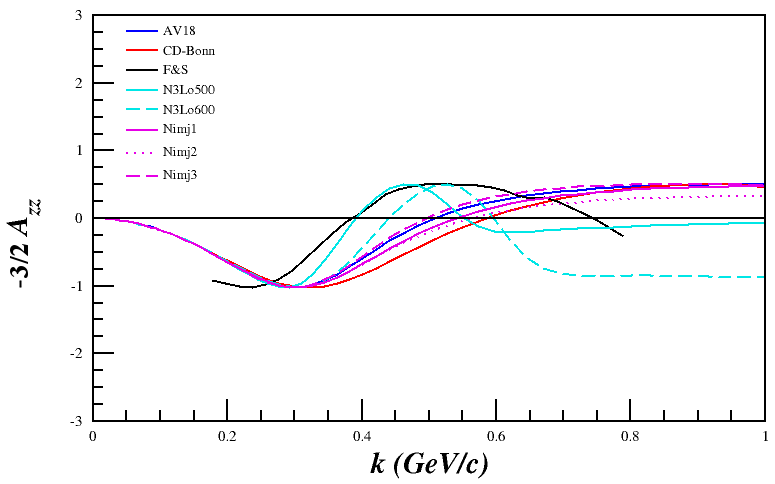Difference between revisions of "Elong-14-05-15b"
| Line 1: | Line 1: | ||
| − | =Ratios and Definitions= | + | =Non-Relativistic Case= |
| + | ==Ratios and Definitions== | ||
In [http://www.sciencedirect.com/science/article/pii/0370157381901290 Frankfurt and Strikman's 1981 report], they go into a bit more detail of how to make the cross section ratios. In particular, on page 258 there is an equation (3.19 and 3.20) for the ratio of cross sections with respect to k, | In [http://www.sciencedirect.com/science/article/pii/0370157381901290 Frankfurt and Strikman's 1981 report], they go into a bit more detail of how to make the cross section ratios. In particular, on page 258 there is an equation (3.19 and 3.20) for the ratio of cross sections with respect to k, | ||
| Line 27: | Line 28: | ||
[[Image:2014-05-15-azz-180deg.png|600px]] | [[Image:2014-05-15-azz-180deg.png|600px]] | ||
| − | =Angular Dependence= | + | ==Angular Dependence== |
One of the on-going issues I've been having is defining the kinematic directions the same as F&S. Following the convention with <math>z</math> being along the direction of the virtual photon, in the non-relativistic case, | One of the on-going issues I've been having is defining the kinematic directions the same as F&S. Following the convention with <math>z</math> being along the direction of the virtual photon, in the non-relativistic case, | ||
| Line 47: | Line 48: | ||
[[Image:2014-05-16-inclusive-azz.png]] | [[Image:2014-05-16-inclusive-azz.png]] | ||
| − | =On-going Issues= | + | ==On-going Issues== |
One thing that I'm not entirely sure of at the moment is how to go from <math>k \rightarrow x_{Bj}</math>. I'm also going to ask Mark if he wouldn't mind checking my above work. | One thing that I'm not entirely sure of at the moment is how to go from <math>k \rightarrow x_{Bj}</math>. I'm also going to ask Mark if he wouldn't mind checking my above work. | ||
| Line 68: | Line 69: | ||
for backward direction k_3 > p_3 - I think this explains the difference. | for backward direction k_3 > p_3 - I think this explains the difference. | ||
| + | |||
| + | =Relativistic Case= | ||
Revision as of 13:10, 19 May 2014
Non-Relativistic Case
Ratios and Definitions
In Frankfurt and Strikman's 1981 report, they go into a bit more detail of how to make the cross section ratios. In particular, on page 258 there is an equation (3.19 and 3.20) for the ratio of cross sections with respect to k,
<math>r(\xi,k)=1+\left(\frac{3(k\xi)^2}{k^2}-1\right)\frac{u(k)w(k)\sqrt{2}+w^2(k)/2}{u^2(k)+w^2(k)}</math>
where <math>\xi</math> is the D-polarization in the D-rest frame, with <math>\xi=(1,\pm i, 0)/\sqrt{2}</math> for <math>\lambda_D=\pm 1</math>, and <math>\xi=(0,0, 1)</math> for <math>\lambda_D=0</math>. Assuming that <math>k\xi=\vec{k}\cdot\xi</math>, this leads to three possible ratios:
<math>r(\pm 1,k)=1+\left(\frac{3k_1^2-3k_2^2}{2\vec{k}\cdot\vec{k}}-1\right)\frac{u(k)w(k)\sqrt{2}+w^2(k)/2}{u^2(k)+w^2(k)}</math>
<math>r(0,k)=1+\left(\frac{3k_3^2}{\vec{k}\cdot\vec{k}}-1\right)\frac{u(k)w(k)\sqrt{2}+w^2(k)/2}{u^2(k)+w^2(k)}</math>.
If I am understanding their kinematic variables correctly, then the virtual-photon points along the <math>\hat{z}</math> axis, so in the case of a nucleon being knocked-out at 180deg, <math>k_1=0, k_2=0, k_3=|\vec{k}|</math>. This leads to, in the case of <math>r(0,k)</math> for their Fig. 3.9a,
<math>r(0,k)=1+2\frac{u(k)w(k)\sqrt{2}+w^2(k)/2}{u^2(k)+w^2(k)}</math>,
which can be recreated using the current wavefunctions.
This would make their Fig. 7.5 from their 1988 report simply <math>A_{zz} = r(\pm 1,k)-r(0,k)</math> for D(e,e'p) with p at 180deg, which can also be reproduced.
Angular Dependence
One of the on-going issues I've been having is defining the kinematic directions the same as F&S. Following the convention with <math>z</math> being along the direction of the virtual photon, in the non-relativistic case,
With the light-cone variables being used, I believe that <math>p_1 = p_{\perp} = \sqrt{p_x^2+p_y^2},~~p_2=0,~~p_3=p_z</math>. This lets me recreate their angular distribution in the 1988 report's Fig. 7.6
Note that my assumption for the section above, with the knocked-out proton going at 180deg, as <math>\sin(\pi)=0 \rightarrow p_1=p_2=0, ~\cos(\pi)=1 \rightarrow p_3=p</math> would hold.
Azz for D(e,e')
In order to find the inclusive D(e,e') Azz, we would simply integrate over all possible angles of the knocked-out nucleon. This gives
On-going Issues
One thing that I'm not entirely sure of at the moment is how to go from <math>k \rightarrow x_{Bj}</math>. I'm also going to ask Mark if he wouldn't mind checking my above work.
Notes from Mark:
It seems to me that you were using version corresponding to \vec k =\vec p_s
this is what we refer to as nonrelativistic version.
In LC there is a non linear relation between k and p_s. The relation can be easiest done the following way:
a) define alpha_N= 2(E_p -p_3 )/m_D ( backward direction corresponds to negative p_3
b) use relation k_t = p_t
c) calculate k^2 from {m_N^2+p_t^2 \over \alpha (2-\alpha) } = m_N^2 + k^2
d) find k_3 = \sqrt(k^2 -k_t^2) with sign k_3 the same as p_3.
for backward direction k_3 > p_3 - I think this explains the difference.
